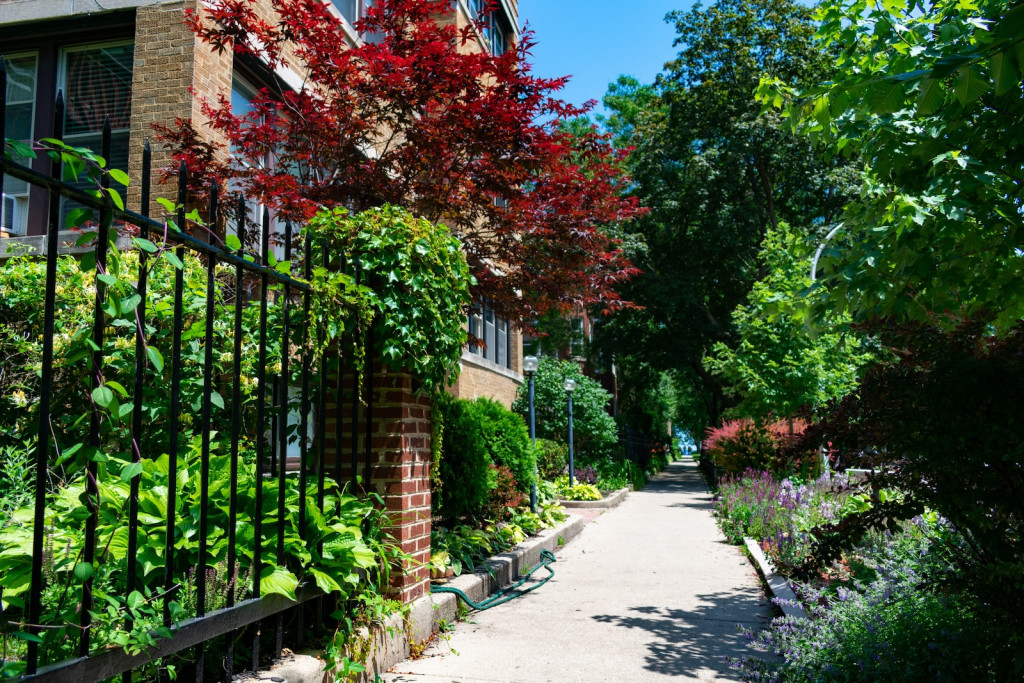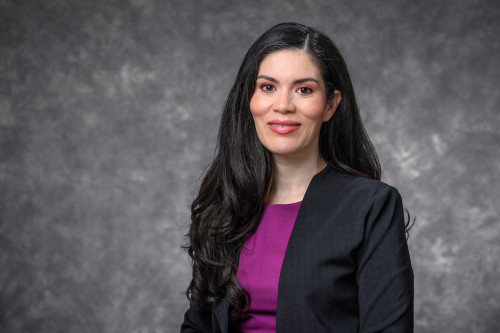Chicago’s participatory budgeting a positive, but incomplete, step toward inclusion

A sidewalk in Rogers Park, Chicago, where residents used participatory budgeting to decide on infrastructure projects like repaving streets, painting murals and installing new playgrounds. Photo by James Andrews/iStock
Street-level mobilization, an outreach strategy aimed at making participatory budgeting more inclusive, can only partially achieve its goal for marginalized groups, according to a multiyear ethnographic study in Chicago’s Rogers Park neighborhood by Assistant Professor Denia Garcia of the La Follette School of Public Affairs.
Participatory budgeting is a practice in which citizens make decisions about part of a public budget through a series of assemblies, deliberations and voting methods. In participating Chicago wards, residents decide on infrastructure projects like repaving streets, painting murals and installing new playgrounds. Street-level mobilization is a direct outreach strategy to make civic participation more accessible to everyone.
However, Garcia’s field work demonstrates that full inclusion is not possible through participatory budgeting because it is not designed to give people the power to meaningfully effect change in their community. In Chicago, participatory budgeting is limited to aldermanic “menu” money for discretionary infrastructure spending. That means communities can decide how to spend money in infrastructure projects like repaving sidewalks but not in projects related to the ward’s operational costs like after-school programming. Thus, the power to decide on many issues that matter to people, such as education and public safety, falls outside the purview of participatory budgeting.

Denia Garcia
“Even in the highly diverse and politically active community of Rogers Park, a major theme highlighted in my work as a participant observer was that of pervasive distrust in the government to be an honest and effective broker of the public’s funds,” Garcia says. “This is despite the fact that participatory budgeting is specifically designed to build trust and put agency back into the hands of the community.”
During her field work — which lasted more than three years — one of Garcia’s responsibilities was to assist the 49th Ward alderman’s office in recruiting participatory budgeting voters. To do so, she asked residents walking by a train station, “Would you like to decide how to spend a million dollars to improve the neighborhood?” This street-level mobilization increased voting and helped create pop-up civic spaces about the project and the neighborhood, according to Garcia’s research.
However, upon analysis of her data, she found responses often betrayed a lack of institutional trust among the citizens that responded to Garcia. Distrust in government was common among both those who voted in the participatory budgeting election and those who explained why they refused to vote. Distrust was the second most common explanation for not voting after “I’m running late.” Garcia’s observations, and interviews with nearly 100 residents, revealed that these expressions of distrust often have a racial component and are indicative of a broken relationship between citizens and their government.
Distrust often manifested as the belief that the projects on the ballot would not be completed or that the funds would not be distributed fairly. This belief was more prevalent among Latino and Black residents due to historical and contemporary political exclusion and disinvestment in their neighborhoods. One man said in Spanish to Garcia, “Why [vote] if you are not going to do it?” as he walked away. A Black woman told her, “It’s not going to be for this part of the neighborhood.”
The 49th Ward is in Rogers Park, a highly diverse and progressive neighborhood on the northside of Chicago with more than 50,000 residents. The 49th Ward became the first place in the United States to adopt participatory budgeting in 2009. However, civic events did not reflect the ward’s racial diversity, according to observations made during Garcia’s fieldwork.
Garcia’s research comes at a time when trust in government has dropped precipitously. The percentage of Americans who reported trusting the federal government to do what is right “always” or “most of the time” declined from 77 percent in 1964 to 24 percent in 2021, and nearly three out of four Americans believe that elected officials do not care what people like them think, according to the Pew Research Center.
“As trust in government – and even democracy itself – continues to plummet, this research highlights how even the best-intended strategies for inclusive civic participation struggle to overcome the headwinds of corruption, racism and marginalization,” Garcia says. “Street-level outreach is a necessary, but not sufficient, strategy to engage citizens in participatory processes. Governments must work to rebuild trust if we aspire to fully inclusive communities.”
